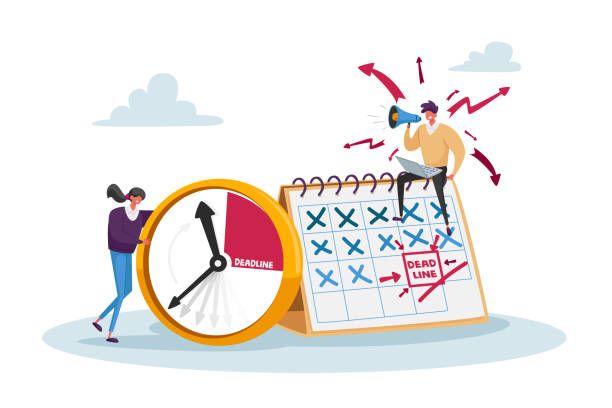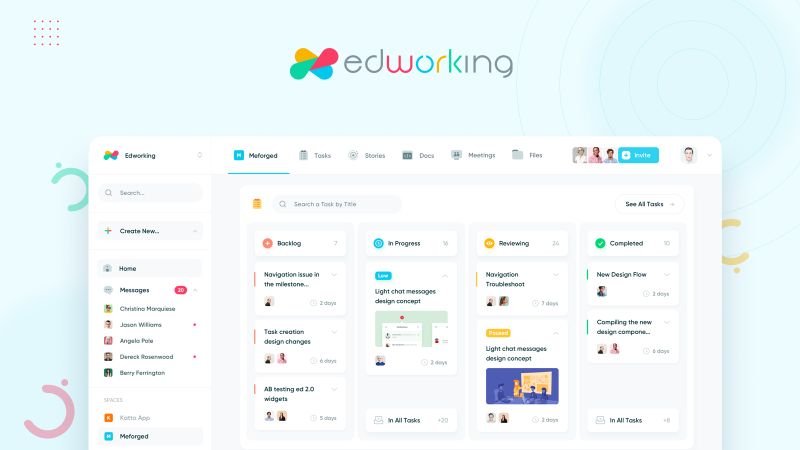In the ever-evolving landscape of project management, the art of optimizing resources has become a cornerstone for success. Among the myriad of techniques available, resource smoothing stands out as a strategic approach that not only enhances project efficiency but also significantly improves team dynamics and project outcomes. At its core, resource smoothing is about the judicious allocation of resources over the duration of a project to ensure a steady workload, thereby avoiding the peaks and troughs that can lead to project delays and workforce burnout.
The significance of resource smoothing in project management cannot be overstated. It plays a pivotal role in ensuring that projects are not just completed on time and within budget, but also that they are executed in a manner that is sustainable for the team and other resources involved. This technique becomes particularly valuable in scenarios where resources are limited, and the margin for error is slim. By smoothing out the demands on resources, project managers can create a more predictable and manageable work environment, leading to improved productivity and, ultimately, a higher quality of work.

Moreover, resource smoothing is about more than just the tactical allocation of human resources; it extends to the efficient use of materials, equipment, and financial resources, making it a comprehensive approach to project management. This technique ensures that every aspect of the project is aligned and moving forward in harmony, minimizing waste and maximizing output.
In this blog post, we delve deep into the realm of resource smoothing, exploring its definition, benefits, and the nuanced differences between resource smoothing and its close cousin, resource leveling. We'll also tackle the challenges of implementing resource smoothing and provide insights into how this technique can be a game-changer in managing projects more effectively. Whether you're a seasoned project manager or just stepping into the field, understanding the intricacies of resource smoothing can equip you with the tools to navigate the complexities of project management with greater ease and confidence.
 Understanding Resource Smoothing
Understanding Resource Smoothing
Diving into the heart of resource management strategies, it's essential to grasp the concept and application of resource smoothing. This technique is a linchpin in the realm of project management, aimed at optimizing the use of available resources without extending the project's timeline. Let's unfold the layers of resource smoothing to appreciate its purpose and differentiate it from similar strategies.
What is Resource Smoothing
Resource smoothing is a technique used in project management to adjust the activities of a project such that the demand for resources does not exceed the supply. It's applied within the constraints of the project's timeline, meaning the primary goal is to ensure that resources are allocated as evenly as possible without affecting the project's end date. The purpose of resource smoothing is multifaceted: it aims to minimize periods of high and low resource utilization, thereby reducing the risk of resource burnout and idle time. This not only enhances efficiency but also promotes a more balanced workload among team members, leading to improved morale and productivity.

At its core, resource smoothing is about making the most of what you have—maximizing the effectiveness of resources by distributing them in a way that aligns with the project's timelines and deliverables. It's a balancing act that requires foresight, planning, and a deep understanding of the project's needs and available resources.
How Resource Smoothing Differs from Resource Leveling
The main difference between resource smoothing and resource leveling lies in their approach to managing project constraints. While both strategies aim to optimize resource allocation, they operate under different parameters. Resource leveling is employed when the project's schedule is flexible; it focuses on adjusting the project timelines based on resource availability. This may lead to an extension of the project's end date to accommodate the efficient use of resources, ensuring that the workload is spread out to match the availability of resources.
On the other hand, resource smoothing is applied when the project's deadline is fixed. It seeks to optimize the allocation of resources within the existing project timeline, striving to ensure an even distribution of work without extending the project duration. Resource smoothing works within the bounds of the project's current schedule, making it the strategy of choice when deadlines are non-negotiable.
Understanding these differences is crucial for project managers when deciding which technique to apply. Resource leveling might be suitable for projects where deadline flexibility can be negotiated in favor of optimal resource utilization. In contrast, resource smoothing is the go-to approach for projects bound by strict deadlines but still in need of effective resource management to ensure project success without compromising on time constraints.
 The Importance of Resource Smoothing
The Importance of Resource Smoothing
Understanding the strategic value of resource smoothing unveils its critical role in project management. This technique not only streamlines project execution but also brings about a plethora of benefits that can significantly impact the project's success. However, like any strategy, it comes with its set of challenges that need adept handling.
Benefits of Resource Smoothing

Optimized Resource Utilization
By ensuring resources are evenly distributed throughout the project's lifecycle, resource smoothing eliminates the peaks and troughs of resource allocation. This leads to a more balanced workload, preventing scenarios where resources are overburdened at times and underutilized at others. Optimized utilization means projects can proceed without unnecessary delays caused by resource shortages, enhancing overall efficiency.
Reduced Project Costs
Smoothing resource allocation helps in avoiding the costly implications of last-minute resource hiring or the expenses related to overtime work. By maximizing the use of available resources, projects can significantly lower financial expenditures associated with resource management, leading to better cost control and budget adherence.
Improved Team Morale
A balanced workload prevents employee burnout and promotes job satisfaction. When team members are not constantly under the pressure of unrealistic deadlines and overwork, morale improves. High morale is closely linked to higher productivity levels, lower turnover rates, and a more positive work environment, contributing to the project's overall success.
 Challenges in Implementing Resource Smoothing
Challenges in Implementing Resource Smoothing
While resource smoothing offers numerous benefits, its implementation is not without challenges. These obstacles can range from technical difficulties to human factors, requiring thoughtful strategies to overcome.
Limited Flexibility in Highly Dynamic Projects
Projects with frequently changing scopes or those subject to external dependencies may find resource smoothing challenging to implement. The fixed nature of project timelines in resource smoothing can be a constraint in dynamically changing environments.

Balancing Act Between Deadlines and Resource Availability
Finding the perfect balance where resources are optimally utilized without impacting the project's deadline can be tricky. This requires precise planning and forecasting, skills that are honed over time and experience.
Resistance to Change
Implementing a new resource management strategy like resource smoothing may face resistance from team members accustomed to traditional methods. This resistance can be mitigated through effective communication, training, and demonstrating the tangible benefits of resource smoothing in practice.
To overcome these challenges, project managers can employ a mix of strategies, including flexible project planning tools, continuous training for team members, and fostering an adaptable project culture. By anticipating these challenges and preparing accordingly, project managers can leverage resource smoothing to its full potential, ensuring project success while maintaining team well-being and budget integrity.
 Practical Steps for Implementing Resource Smoothing
Practical Steps for Implementing Resource Smoothing
Implementing resource smoothing effectively requires a systematic approach, starting from the identification of constraints and requirements to the development and adjustment of a resource smoothing plan. These practical steps ensure that project managers can optimize resource allocation, ensuring that the project progresses smoothly within the set timelines and budget constraints.

Identifying Resource Constraints and Project Requirements
The first step in the resource smoothing process involves a thorough analysis of both the available resources and the project's requirements. This includes identifying the skills, tools, and time each task requires, as well as the availability of team members, equipment, and materials. Understanding these elements allows project managers to pinpoint potential bottlenecks and resource constraints early on, setting the stage for effective resource smoothing.
Key aspects to consider include:
- Skillsets and expertise of team members compared to project needs.
- Availability of team members considering other commitments.
- Physical resources such as equipment and materials required for project tasks.
- Time constraints including deadlines for each phase of the project.
Developing a Resource Smoothing Plan

Once the constraints and requirements are clear, the next step is to develop a resource smoothing plan. This plan outlines how resources will be allocated throughout the project to avoid over-allocation or underutilization, ensuring a steady workflow.
Analyzing Project Schedules
Begin by analyzing the project schedule to identify critical tasks and their dependencies. Look for tasks that have some flexibility in their start and end dates without affecting the project's critical path. Understanding these flexibilities will help in redistributing tasks in a way that evens out resource demands.
Adjusting Resource Allocation
Based on the schedule analysis, adjust the allocation of resources to smooth out peaks and troughs. This might involve delaying some tasks to balance the workload or assigning additional resources to tasks that are critical to maintaining the project timeline. The goal is to ensure a consistent workload across the project duration, taking into account the identified resource constraints and project requirements.
Monitoring and Adjusting the Plan
Resource smoothing is not a set-it-and-forget-it process. Continuous monitoring of both project progress and resource utilization is crucial. This allows for the identification of any discrepancies between the plan and actual performance. Regular reviews provide the opportunity to adjust the resource allocation plan in response to any changes in project scope, resource availability, or unforeseen challenges. Adjustments might include reallocating resources, rescheduling tasks within the project's flexibility, or implementing corrective actions to address any issues.
 Tools and Techniques for Effective Resource Smoothing
Tools and Techniques for Effective Resource Smoothing

In the ever-evolving landscape of project management, leveraging the right tools and techniques is essential for implementing effective resource smoothing. Software tools can automate and streamline the process, while various techniques and strategies enable project managers to optimize resource allocation, ensuring projects are completed on time and within budget.
Software Tools for Resource Smoothing
Several software tools have been designed specifically to aid in resource smoothing, providing project managers with the capabilities to plan, monitor, and adjust resource allocation throughout the life cycle of a project. Here are a few noteworthy examples:
- Microsoft Project: A popular project management software that offers comprehensive features for scheduling, resource allocation, and tracking. Its resource smoothing capabilities allow managers to balance the workload among team members, avoiding overallocation.
- Smartsheet: An online project management tool that excels in flexibility and ease of use. It provides visual timeline management, resource management features, and customizable templates, making it easier to implement resource smoothing strategies.
- Primavera P6: A robust and widely used project management software, particularly in industries like construction and engineering. It offers detailed resource management and analysis features, helping project managers to optimize resource allocation and smoothing across complex projects.
- TeamGantt: This tool simplifies project scheduling with its intuitive Gantt chart interface. It allows for easy adjustment of task durations and resource assignments, facilitating effective resource smoothing.
Each of these tools offers unique features and benefits, making it important for organizations to choose one that best fits their specific project management needs and processes.
Techniques and Strategies for Resource Smoothing

Beyond software tools, several techniques and strategies can be employed to ensure effective resource smoothing:
- Time Buffering: Incorporating buffers into the project schedule allows for flexibility in resource allocation. By allocating extra time to tasks or project phases, project managers can adjust resources without impacting the project's critical path.
- Resource Reallocation: Actively reallocating resources from less critical or less urgent tasks to those that are more critical can help in maintaining a balanced workload across the project team. This may involve shifting team members between tasks or leveraging external resources to fill gaps.
- Prioritizing Tasks: Understanding the priority of each task within the project allows project managers to allocate resources more effectively. Tasks that are critical to the project's success or have fixed deadlines should receive priority in resource allocation.
- Cross-training Team Members: Enhancing the versatility of the project team through cross-training can significantly improve resource flexibility. Team members who can perform multiple roles or tasks can be more easily reallocated, facilitating smoother resource management.
By combining the capabilities of advanced software tools with these strategic techniques, project managers can significantly enhance their resource smoothing efforts. This not only ensures that resources are utilized efficiently but also contributes to the overall success and timely completion of projects. With the right tools and strategies in place, overcoming the challenges of resource allocation becomes a more manageable task, leading to improved project outcomes and team morale.
 Resource Smoothing in Action: Real-World Examples
Resource Smoothing in Action: Real-World Examples
Applying theoretical knowledge to practical situations often provides the best insights into the effectiveness of any project management technique. In the realm of resource smoothing, real-world examples serve as valuable case studies for understanding its impact on project success. Let's delve into two such case studies, where resource smoothing was implemented to navigate complex project challenges.
Case Study 1
Project Overview: A medium-sized software development company faced significant delays in the launch of a new product due to inconsistent resource allocation. The project team encountered bottlenecks because key personnel were overallocated on critical tasks, while other tasks lagged behind due to lack of attention.

Resource Smoothing Implementation: The project manager decided to implement resource smoothing to address these challenges. By analyzing the project schedule and resource allocations, the manager identified areas where resources were over or underutilized. Using a project management tool, they redistributed workloads to ensure a more balanced distribution of tasks among team members.
Outcome: This strategic reallocation allowed for the acceleration of lagging tasks without overburdening any team member. The project was brought back on track, with improved team morale and reduced overtime requirements. The product was launched successfully, meeting the revised timeline and budget constraints.

Case Study 2

Project Overview: A construction company was working on a large infrastructure project with a tight deadline. The initial project schedule was aggressive, leading to resource overallocation and subsequent burnout among the team.
Resource Smoothing Implementation: To tackle this issue, the project management team employed resource smoothing techniques. They started by identifying non-critical tasks that could be rescheduled without affecting the project's critical path. They also introduced time buffers to absorb the impact of potential delays and redistributed resources from less critical to more critical tasks.
Outcome: The adjustments resulted in a more realistic project timeline, with resources evenly distributed across the project's duration. This approach not only alleviated the pressure on the team but also ensured that high-priority tasks received the necessary attention and resources. The project was completed within the adjusted deadline, with significantly improved quality and safety standards.
These case studies illustrate the practical benefits of resource smoothing in managing project schedules and workloads. By applying this technique, project managers can ensure that resources are utilized efficiently, project timelines are met, and team morale is maintained, ultimately contributing to the successful completion of projects.
 Connecting Resource Smoothing to Edworking
Connecting Resource Smoothing to Edworking
In the intricate dance of project management, the tools and platforms we choose can significantly impact our ability to apply methodologies like resource smoothing effectively. Edworking, a comprehensive project management and collaboration platform, offers a suite of features that directly support the principles of resource smoothing, making it an invaluable asset for project managers seeking to optimize their resource allocation.
Edworking provides a centralized space for project planning, tracking, and collaboration, which is crucial for identifying and managing resource constraints and requirements. Its user-friendly interface allows for real-time visibility into team workloads, facilitating the dynamic adjustment of resource allocation based on project needs. Moreover, Edworking's integrated communication tools ensure that changes to project plans and resource allocations are communicated effectively, maintaining team alignment and morale.

Key Features:
- Task Management: Assign and track tasks with ease, ensuring that resources are balanced across the project.
- Real-Time Collaboration: Keep your team connected and informed about project updates, fostering a cohesive project environment.
- Time Tracking and Reports: Gain insights into how project time is being spent, allowing for informed decisions on resource reallocation.
By leveraging Edworking's capabilities, project managers can more effectively implement resource smoothing techniques, ensuring that projects are completed on time, within budget, and with optimal resource utilization.
Call to Action
We invite you to experience how Edworking can transform your project management approach. Explore our platform and discover the difference that effective resource smoothing can make in your projects. Start by enhancing your team's communication skills with our free tools:
- Sharpen your typing skills for better project documentation with Edworking's Paragraph Typing Test.
- Understand your and your team's communication style with our Communication Style Quiz, facilitating smoother project collaboration.
- Assess your management capabilities and identify areas for improvement with the Management Aptitude Test.
Embrace the power of Edworking to streamline your project management processes and elevate your team's performance.
 Conclusion
Conclusion
In the dynamic realm of project management, the art of resource smoothing stands as a beacon of efficiency, guiding teams towards the successful completion of projects with optimized resource utilization. Throughout this exploration, we've delved into the nuances of resource smoothing, distinguishing it from similar practices like resource leveling and highlighting its pivotal role in enhancing project outcomes. By understanding and implementing this strategy, project managers can achieve a harmonious balance of resources, ensuring that projects are not only completed within their timeframes but also executed with the highest efficiency and team morale.
The journey through the facets of resource smoothing—from its definition and benefits to the practical steps for implementation and the tools that facilitate its success—underscores its significance in the project management landscape. Real-world examples have illustrated its applicability and impact, providing tangible insights into its potential to transform project outcomes.
As we've seen, platforms like Edworking offer the features and support necessary to embrace resource smoothing fully, providing a comprehensive toolkit for project managers seeking to elevate their projects. By leveraging such tools, teams can navigate the complexities of project demands with agility and precision, ensuring that every resource is utilized to its fullest potential.
In conclusion, resource smoothing is not just a methodology but a philosophy of project management that prioritizes efficiency, team well-being, and project success. By embracing this approach and utilizing the tools and strategies discussed, project managers can lead their teams to new heights of achievement, proving once again that in the world of project management, it's not just about doing things right but doing the right things efficiently.







